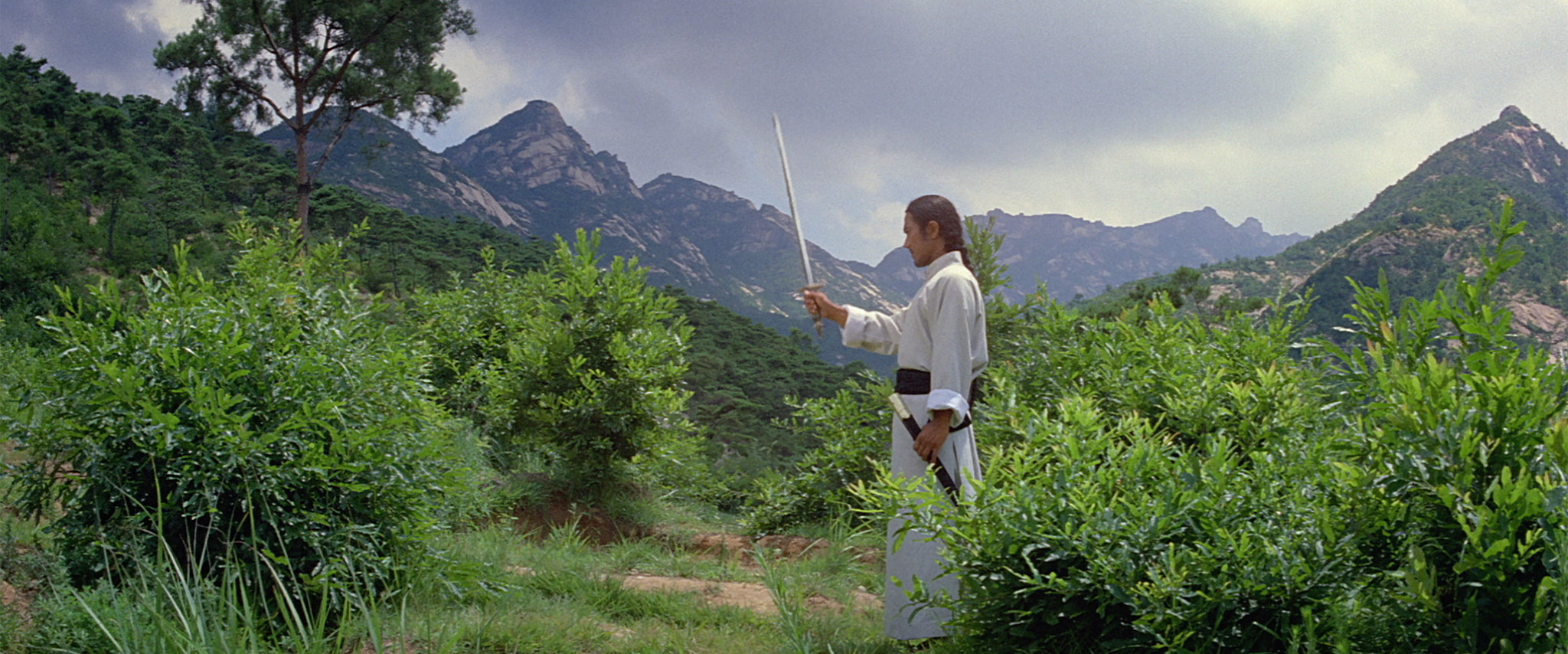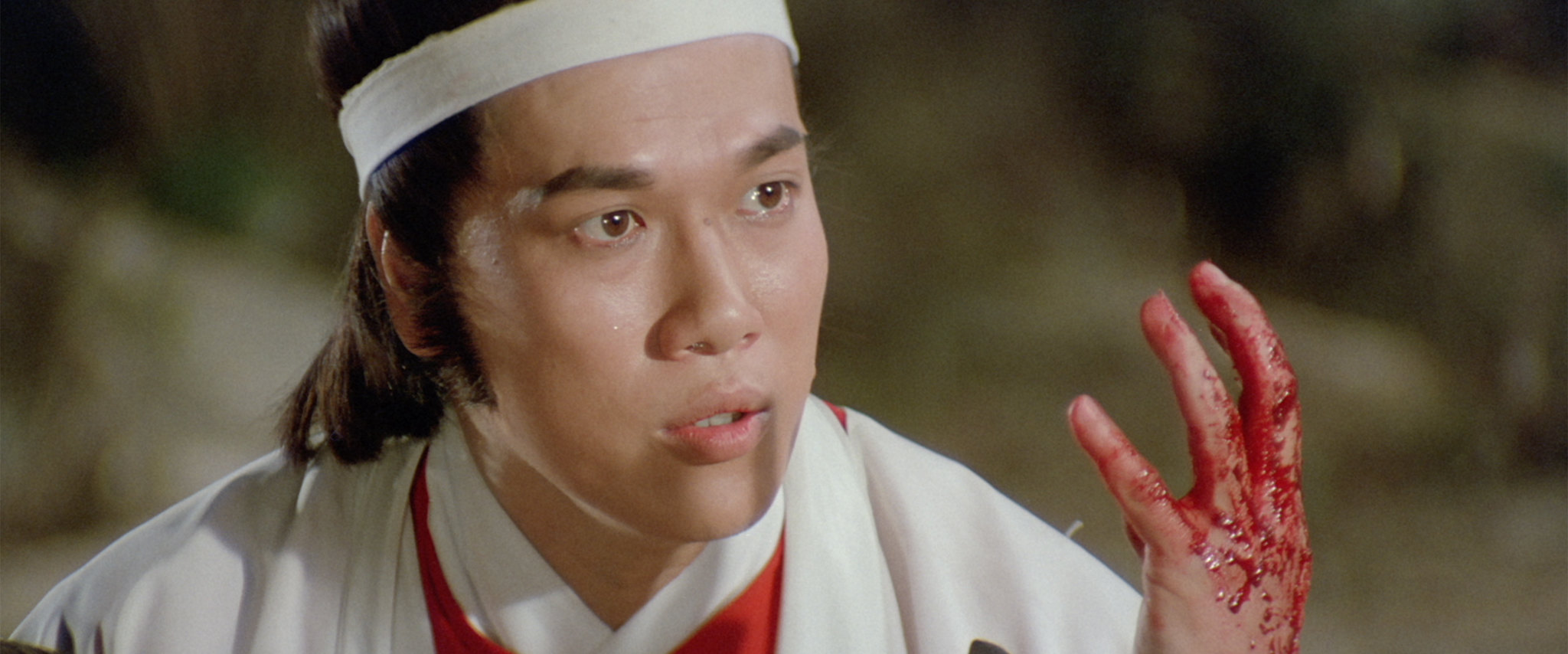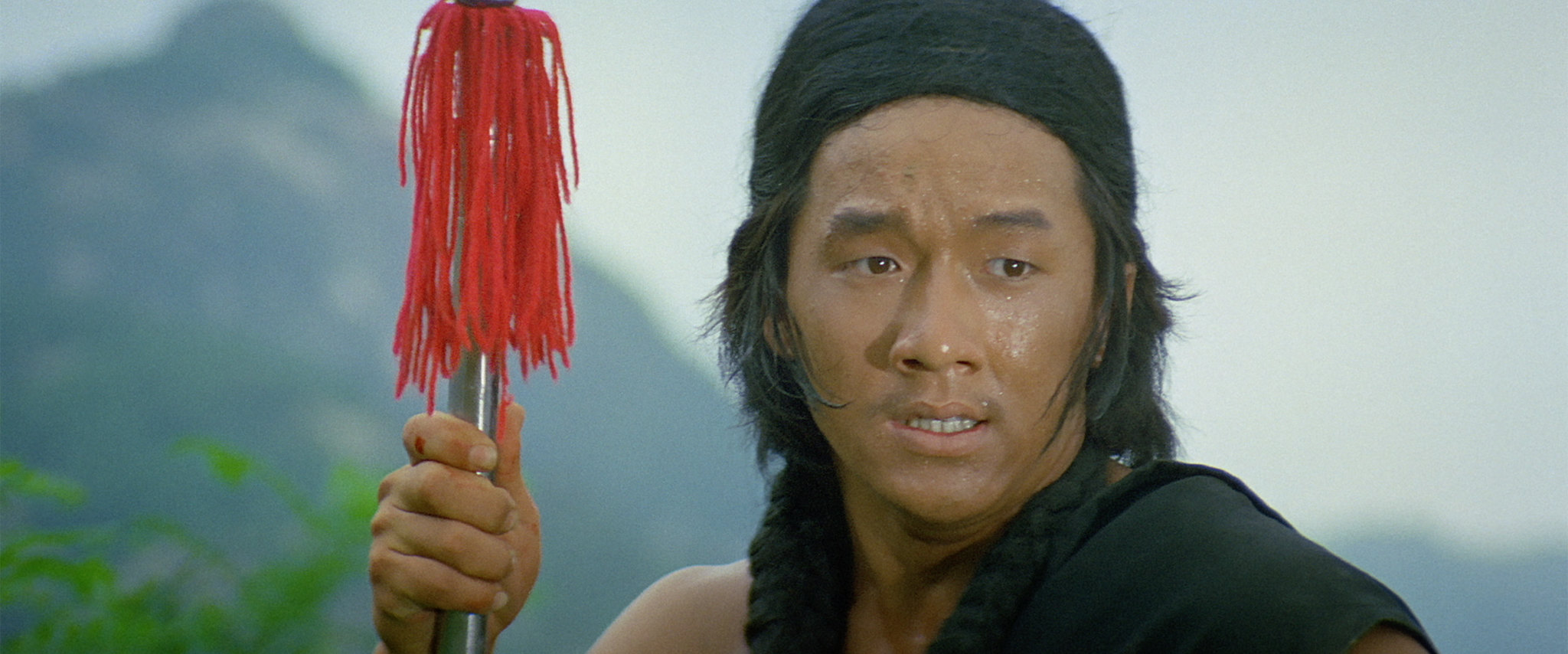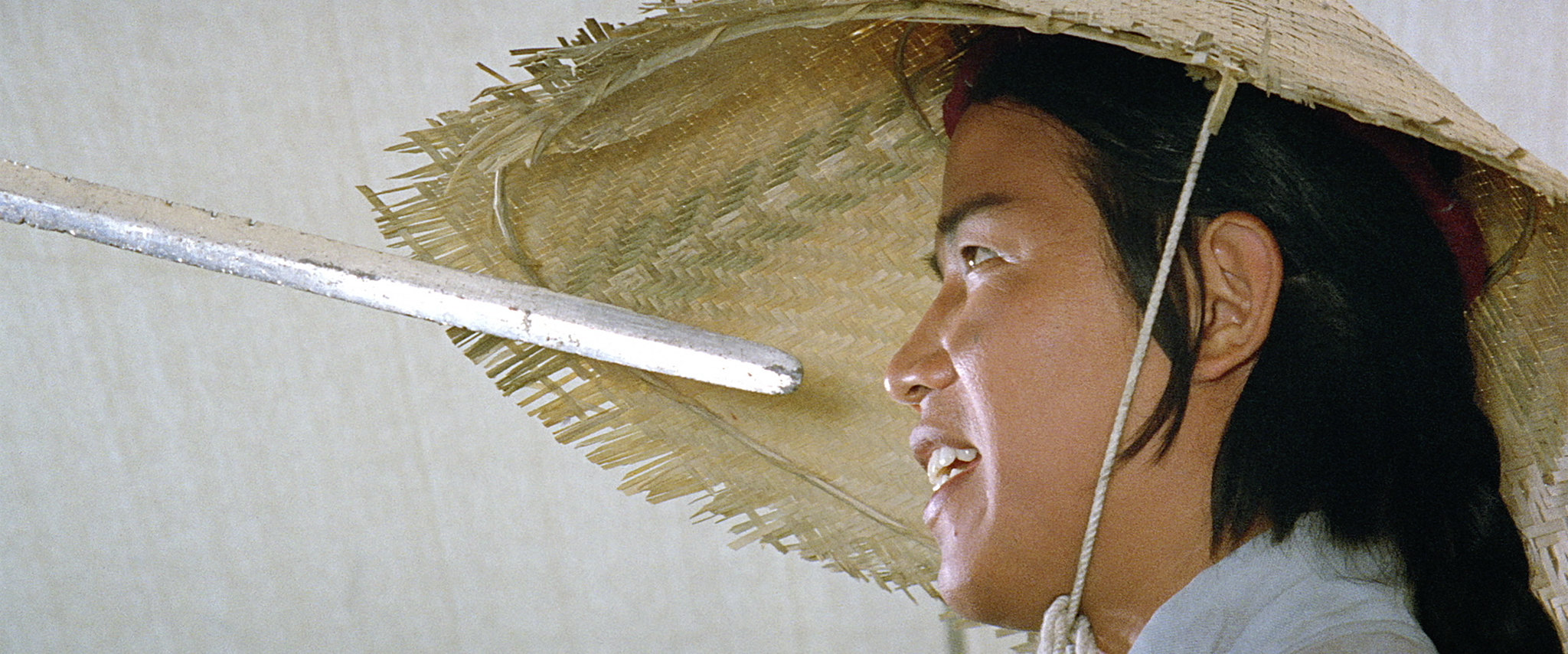I used to think I knew exactly what to expect when watching a John Woo film. Slow motion, doves, “bullet ballets”… Chow Yun Fat? He is amazing at a very specific genre, and you could be forgiven for thinking that’s all he’s ever done. Now Eureka are releasing two very uncharacteristic early films in a double feature as part of their Masters Of Cinema series. Last Hurrah For Chivalry (1979) and Hand Of Death (1976) are both old fashioned martial arts films, and while they are a mixed bag, they provide a valuable insight into how Woo’s style has evolved over the years.
Of the two, Last Hurrah For Chivalry is the more accomplished film. The story follows the heir to a dynasty seeking revenge on an evil kung fu master who has murdered his father and decimated his household. He hires two killers to help, but the plan is complicated by shifting allegiances and double crosses within double crosses, culminating in an epic showdown.
As the two hired killers, Damian Lau and Wai Pei have great chemistry. Pei is the ostensible star, and certainly looks the part, but it’s Lau who plays the more interesting, morally ambiguous character, and gives a really charismatic performance. The film is full of little character moments that really flesh out the story, and help the film feel a lot more lived in. It also features beautifully shot fight scenes, and it’s just really entertaining, with impressive set-pieces and memorable martial arts villains, especially the henchman who is so in tune with his swordsmanship that he can only fight in his sleep.
The abiding impression is weirdly that of a spaghetti western, with the emphasis firmly on honour, and the grudging respect and brotherhood that exists between the hired killers. The final duel is really stylish even if it defies logic and realism, with a satisfying, if bittersweet ending.
On paper, the earlier Hand Of Death should be the more successful film. It looks stunning, and has one of the most legendary fight choreography teams behind the scenes, at the very start of their careers. The fight sequences dwarf those in Last Hurrah For Chivalry, and while the former film has picturesque cinematography, it can’t rival Hand Of Death’s numerous beautiful location settings.
Where Hand of Death falls down is in the storytelling. It’s too sprawling, less coherent, and often feels like the plot is just there to link a series of admittedly thrilling fight sequences. At it’s most basic level the plot follows a ragtag group of fighters who team up to take down an evil warlord. It has a real “assembling the team” feel to it, and almost feels like a reimagining of Seven Samurai, with Kung Fu masters rather than samurai. Like the previous film, there are double crosses, but the motivations are less clear. Without the fleshing out of characters it just doesn’t hold together in the same way.
The presence of Jackie Chan and Sammo Hung is great on the one hand – they provide a lot of martial arts prowess that makes the fight sequences feel genuinely raw. However these threaten to dominate the film, and John Woo’s style gets lost in the mix. Both Hung and Chan inhabit the personas they will go on to develop really well, and it’s especially interesting to see Chan in a more subdued, serious role. He’s the most compelling character, combining pathos with humour, and his arc is the film’s most successful element (he’s almost the Inigo Montoya of the film). Even at such a young age, he’s incredibly charismatic, and steals every scene he’s in.
As a whole, these films provide a glimpse into the beginnings of Woo’s inimitable style. Both are very different to Woo’s later output, but feature elements that would go on to be integral to his style, including meticulously crafted fight scenes and themes of brotherhood. Hand Of Death is beautifully put together but ultimately feels more like an anonymous martial arts film, with less emphasis on the direction. Last Hurrah For Chivalry is more cinematic. You can see the more assured Woo using the camera and editing here to tell a more coherent story. There are things to commend in both films; they’re essential viewing for anyone interested in Woo’s career, and more importantly they are both a lot of fun!
Special Features
Eureka releases are always beautifully packaged, and this is no exception. Both films are beautifully rendered here, as is the norm with Eureka releases, and come with a plethora of special features, including brand new commentaries for both films, and interviews with John Woo.








